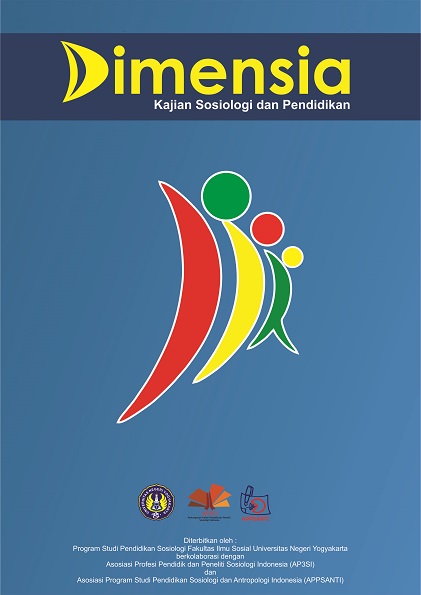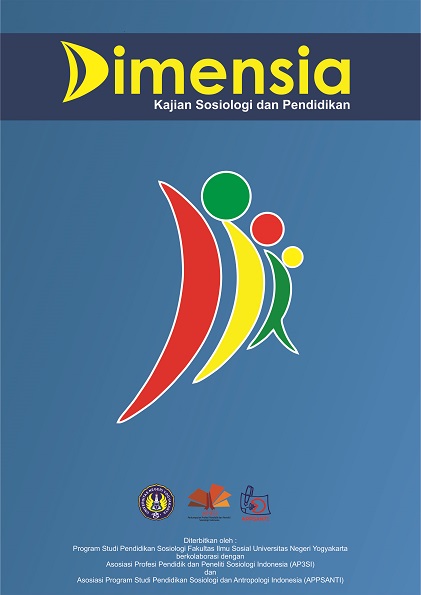Chatbot Dituntut
Analisis Sosiologi Hukum terhadap Gugatan Character.AI dalam Kasus Kematian Remaja
DOI:
https://doi.org/10.21831/dimensia.v14i2.81003Keywords:
Kecerdasan Buatan, Regulasi Hukum, Hukum Responsif.Abstract
Kemajuan teknologi kecerdasan buatan (AI) tidak hanya membawa manfaat, tetapi juga memunculkan konflik sosial dan hukum yang kompleks. Studi ini menganalisis gugatan terhadap Character.AI, sebuah platform chatbot AI, yang diduga berkontribusi pada kematian seorang remaja. Penelitian menggunakan pendekatan kualitatif dengan studi kasus dan analisis teori hukum responsif. Hasil menunjukkan bahwa kesenjangan regulasi menjadi hambatan utama dalam menentukan tanggung jawab antara pengguna dan penyedia layanan AI. Selain itu, status hukum AI yang tidak jelas apakah sebagai alat atau produk menyulitkan proses litigasi. Kasus ini mencerminkan urgensi pengembangan kerangka hukum yang adaptif terhadap teknologi generatif. Perspektif sosiologi hukum menekankan perlunya hukum yang responsif terhadap perubahan sosial akibat inovasi teknologi. Temuan ini menunjukkan bahwa tanpa regulasi yang memadai, risiko sosial dari AI akan sulit ditangani secara adil dan efektif.
The advancement of artificial intelligence (AI) technology not only brings benefits but also generates complex social and legal conflicts. This study analyzes a lawsuit against Character.AI, an AI-based chatbot platform, which is alleged to have contributed to the death of a teenager. Employing a qualitative case study approach and responsive legal theory, the research reveals that regulatory gaps are a major obstacle in determining liability between users and AI service providers. Furthermore, the unclear legal status of AI whether as a tool or a product complicates litigation processes. The case highlights the urgency of developing adaptive legal frameworks to govern generative technologies. From a socio-legal perspective, the findings emphasize the necessity for law to be responsive to social changes driven by technological innovation. Without adequate regulation, the social risks posed by AI will remain difficult to address fairly and effectively.References
Adiningrum, R., Maharani, F., & Mohammad, W. (2023). The Perspectives of Character AI Personas Regarding Thoughts of User's Suicide Obsession. Emika: Journal of Technology and Artificial Intelligence, 1(1), 1–7.
Asa, A. I., Munir, M., & Ningsih, R. S. M. (2021). Nonet And Selznick's Responsive Law Concept In A Historical Philosophy Perspective. Crepido, 3(2), 96–109.
Bergman, M. (2024). UNITED STATES DISTRICT COURT MIDDLE DISTRICT OF FLORIDA ORLANDO DIVISION.
Chandra, T. (2019). Non-Litigation Process Land Dispute Settlement for Legal Certainty. Substantive Justice International Journal of Law, 2(2), 177–194.
Crane, E. (2024). Boy, 14, fell in love with "˜Game of Thrones' chatbot "” then killed himself after AI app told him to "˜come home' to "˜her.' New York Post.
Diab, A. L. (2014). Peranan hukum sebagai social control, social engineering dan Social welfare. Al-'Adl, 7(2), 53–66.
Duffy, C. (2024). "˜There are no guardrails.' This mom believes an AI chatbot is responsible for her son's suicide. CNN.
Jackson, D. (t.t.). An Overview of the Civil Litigation Process in Florida. The Law Firm of Douglas G. Jackson.
Kritzer, H. M. (2015). Litigation. Dalam International Encyclopedia of the Social & Behavioral Sciences: Second Edition (hlm. 265–275). Elsevier Inc.
Miller, G., & Lennett, B. (2024). Breaking Down the Lawsuit Against Character.AI Over Teen's Suicide. Tech Policy.Press.
Mohammad, W. (2023). The Role of AI Waifu Characters in Supporting Weaboos with Posttraumatic Relationship Syndrome (PTRS). Sinergi International Journal of Psychology, 1(2), 77–95.
Mukund. (2024). Character.AI Statistics You Need to Know in 2024. Weam.
Nwoko, H. (t.t.). Mom Blames Character.AI for Her Teen's Death"”What Parents Should Know. Parents.
Patimah, N. N., Rahmanita, M. A., & Raharja, R. M. (2024). Adaptasi Penggunaan Artificial Intelligence (AI) Pada Mahasiswa. International Journal of Educational Technology and Society, 1(2), 114–123.
Roth, E. (2024). Character.AI and Google sued after chatbot-obsessed teen's death. The Verge.
Soekanto, S. (2004). Faktor-faktor Yang Mempengaruhi Penegakan Hukum (1 ed.). Rajawali Pers.
Zahira, S. I., Maharani, F., & Mohammad, W. (2023). Exploring emotional bonds: Human-AI interactions and the complexity of relationships. Serena: Journal of Artificial Intelligence Research, 1(1), 1–9.
Downloads
Published
How to Cite
Issue
Section
License
Copyright (c) 2025 Siti Fatimah Goro, Chisa Belinda Harahap

This work is licensed under a Creative Commons Attribution-ShareAlike 4.0 International License.
Penulis yang menerbitkan jurnal ini menyetujui ketentuan berikut:
- Penulis memegang hak cipta dan memberikan hak publikasi pertama kepada jurnal dengan karya tersebut secara bersamaan dilisensikan di bawah Lisensi Atribusi Creative Commons yang memungkinkan orang lain untuk berbagi karya dengan pengakuan atas kepenulisan karya dan publikasi awal di jurnal ini.
- Penulis dapat mengadakan perjanjian kontrak tambahan yang terpisah untuk distribusi non-eksklusif dari karya versi terbitan jurnal (misalnya, mempostingnya ke repositori institusi atau menerbitkannya dalam buku), dengan pengakuan atas publikasi awalnya pada tahun jurnal ini.
- Penulis diizinkan dan didorong untuk memposting karya mereka secara online (misalnya, di repositori institusi atau di situs web mereka) sebelum dan selama proses penyerahan, karena hal ini dapat mengarah pada pertukaran yang produktif, serta kutipan karya yang diterbitkan lebih awal dan lebih banyak (Lihat The Pengaruh Akses Terbuka).
====================================================
Authors who publish with this journal agree to the following terms:
- Authors retain copyright and grant the journal right of first publication with the work simultaneously licensed under a Creative Commons Attribution License that allows others to share the work with an acknowledgement of the work's authorship and initial publication in this journal.
- Authors are able to enter into separate, additional contractual arrangements for the non-exclusive distribution of the journal's published version of the work (e.g., post it to an institutional repository or publish it in a book), with an acknowledgement of its initial publication in this journal.
- Authors are permitted and encouraged to post their work online (e.g., in institutional repositories or on their website) prior to and during the submission process, as it can lead to productive exchanges, as well as earlier and greater citation of published work (See The Effect of Open Access).








